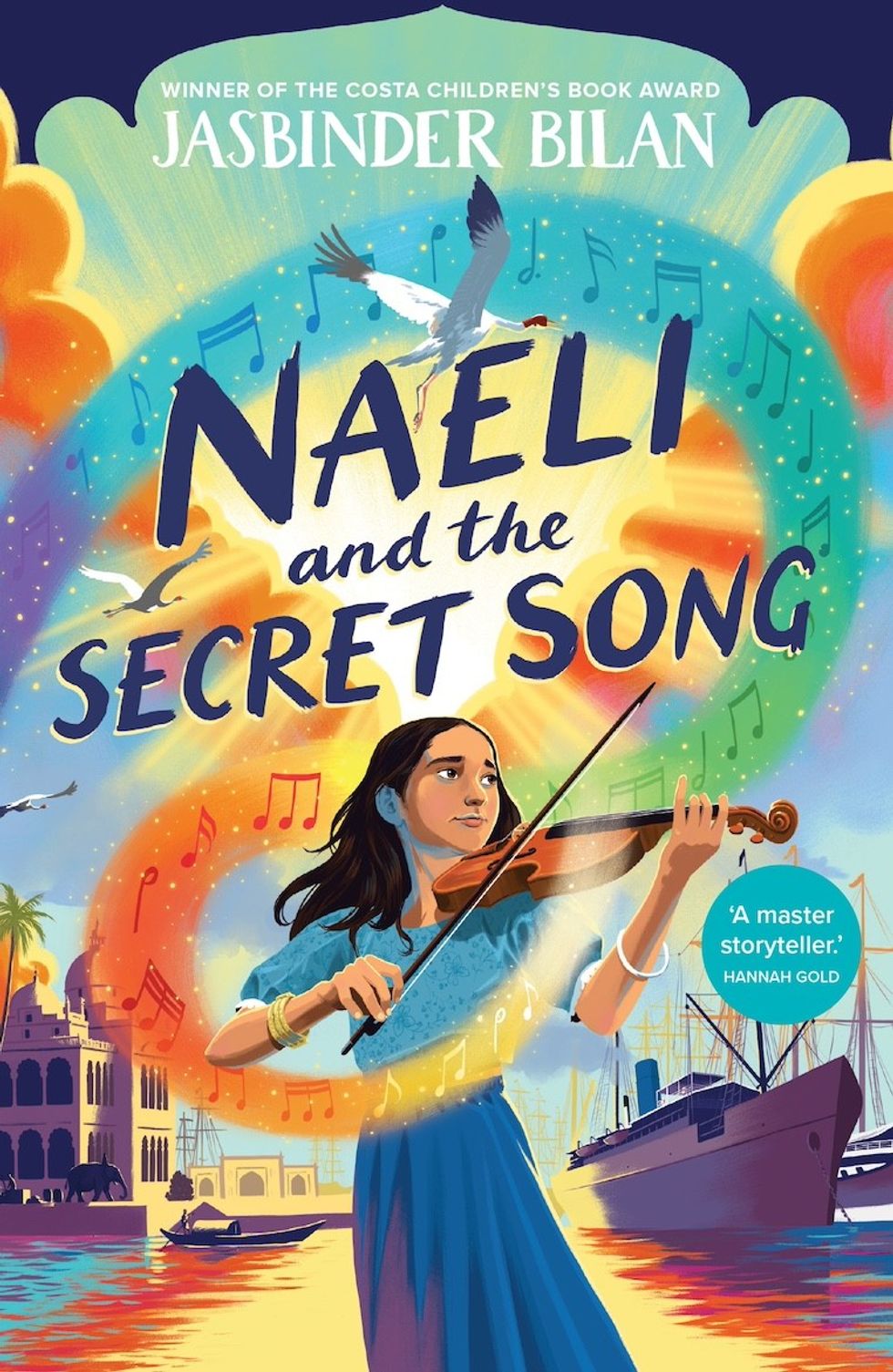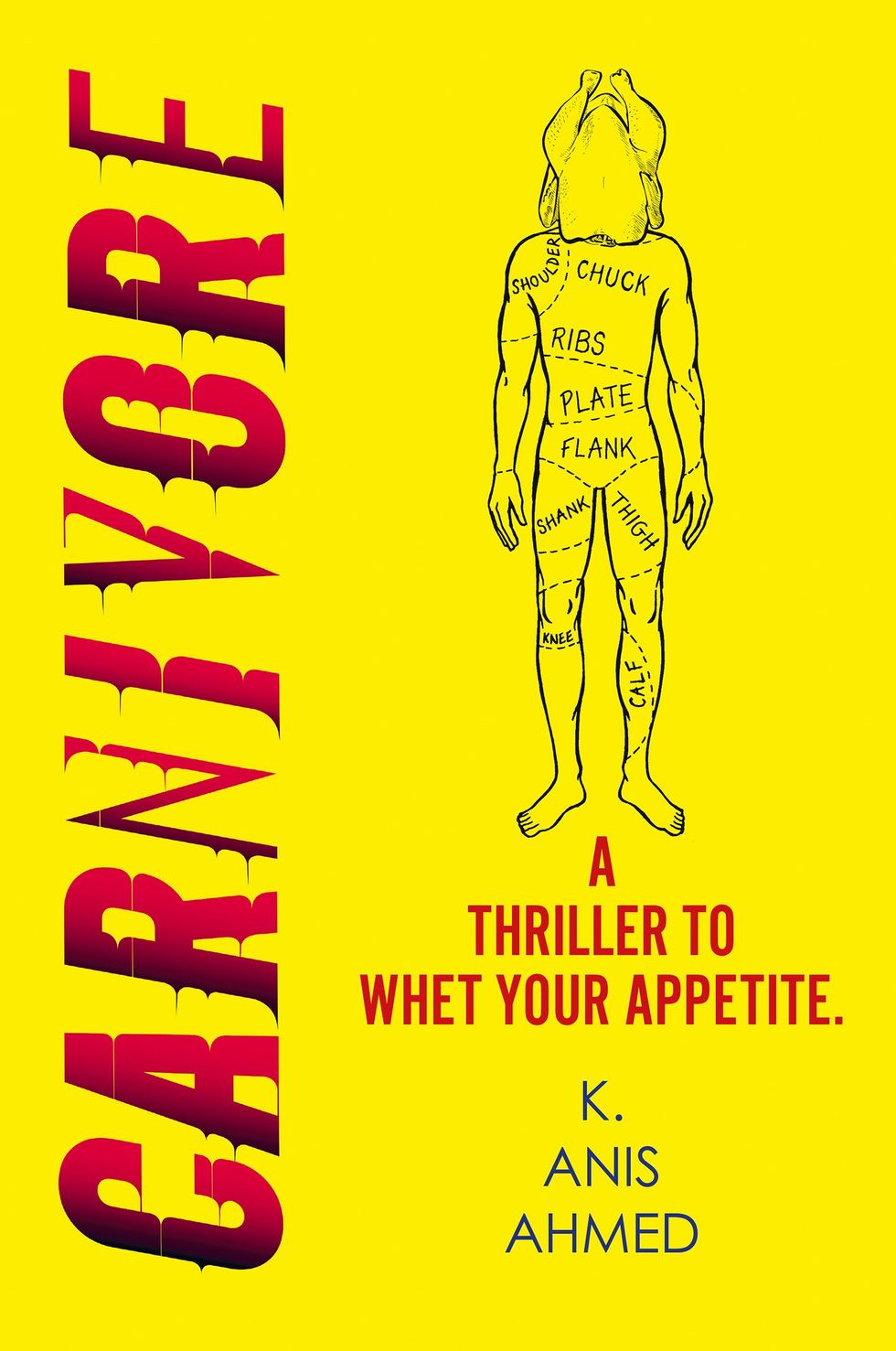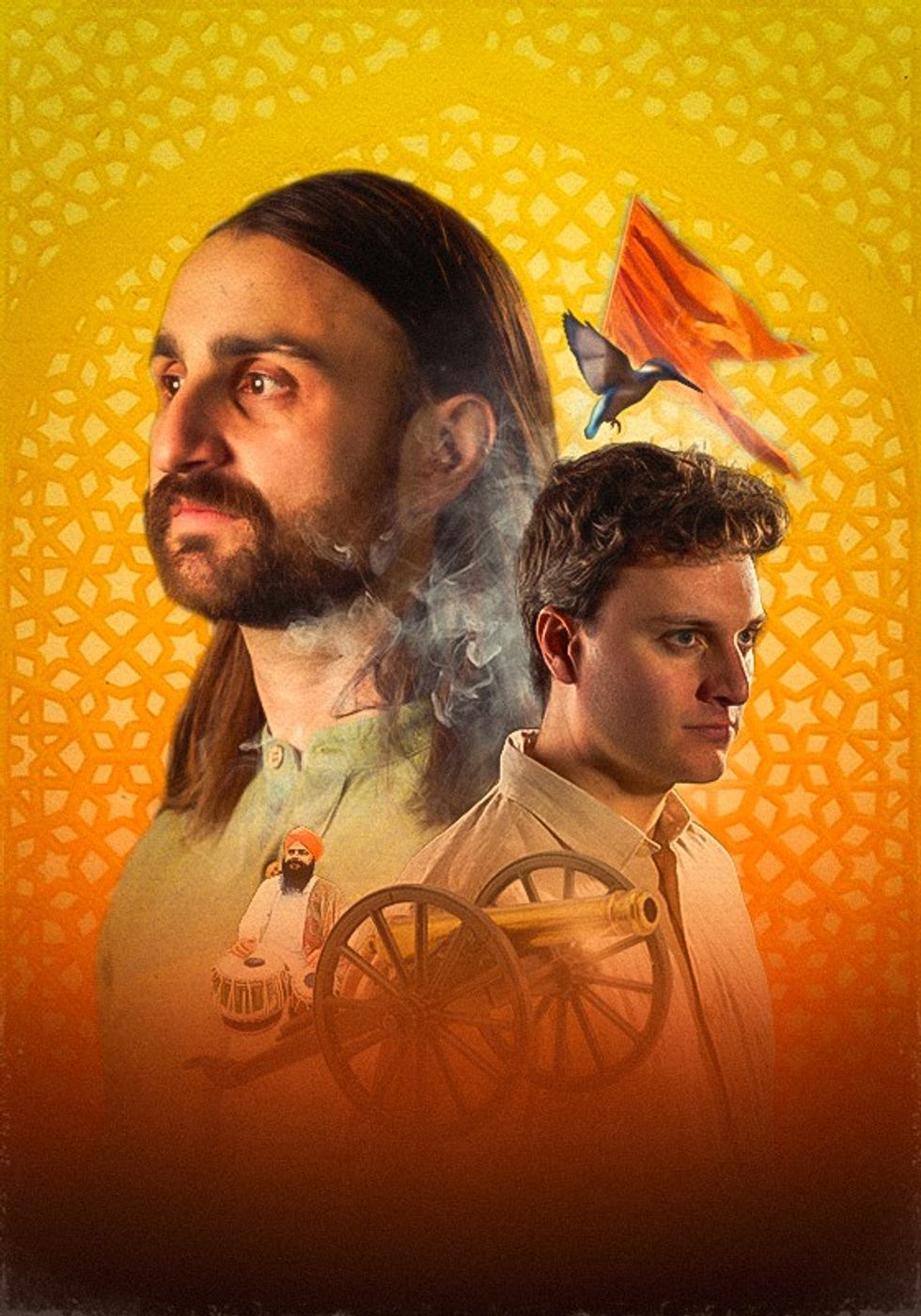By Asjad Nazir
INDIA’S ICONIC PLAYBACK SINGER AND NATIONAL TREASURE TURNS 88
LEGENDARY singer Lata Mangeshkar devoted her life to a deep love of music. She started sing-ing to support her struggling family and went on to become one of the greatest recording artists in history. The much-revered voice behind thou-sands of classics turns a year older this week and will receive countless messages of love from around the world. To celebrate her 88th birthday, Eastern Eye went back in time to present an allyou need to know about the nightingale of India.
A is for awards: The great legend has won all the highest accolades in India. This includes Indian cinema’s most prestigious honour, the Dada Sa-heb Phalke award and government awards in-cluding Padma Bhushan, Padma Vibhushan and Bharat Ratna. She has won three National Film Awards. The singer won four Filmfare Awards and then in 1969, early in her career, asked them not to give her any more so newer generations of singers could be promoted.
B is for breadwinner: She was just 13-years-old in 1942 when her father died of heart disease and made her the main breadwinner of her im-poverished family. “We saw very hard days. In our home there were free meals for every guest. But when we fell on hard times there was no food for the family. There were days when my siblings and I didn’t eat the entire day,” said Lata in a 2015 interview.She started getting low-key assignments as a singer and child actress (pictured above) in re-gional cinema, which helped support the family. That was the beginning of her remarkable rise to stardom.
C is for composing: Lata has also previously composed a number of songs including for the following Marathi films Ram Ram Pavhana (1960), Maratha Tituka Melvava (1963), Mohity-anchi Manjula (1963), Sadhi Manase(1965) and Tambadi Mati (1969) under the pseudonym of Anand Ghan. In fact she won Maharashtra State Government’s Best Music Director Award for the film Sadhi Manase.
D is for death: The singer had become so popular and powerful by the early 1960s that an attempt was made on her life. Someone tried to slowly poison her and luckily a doctor spotted what was happening when she fell ill. The slow poison incident rendered her weak and she was bedridden for nearly three months. Soon after the incident came to light the cook, who had previously worked with other Bollywood people, vanished without taking his wage.
E is for emotion: The singer made her name with emotion-filled songs that remain popular today. Legend has it that her performance of pa-triotic song Aye Mere Watan Ke Logo, sung to the backdrop of the Sino-Indian War in 1963, bought the then prime minister of India Jawaharlal Nehru to tears.
F is for firsts: The first Hindi song she recorded was Mata Ek Sapoot Ki Duniya Badal De Tu for the Marathi film Gajaabhaau (1943). She won her first Filmfare Award for the song Aaja Re Pardesi from Madhumati (1958) and her first National Award in 1973 for the song Beeti Na Bitai Raina from Parichay (1972). Her first major music influence was legendary singer Noor Jehan and the two later became firm friends despite living in different countries.
G is for Ghulam Haider: The first major music producer to believe in Lata’s talent at a time when no one else did was Ghulam Haider. He gave her a major break with the song Dil Mera Toda, Mujhe Kahin Ka Na Chhora from the movie Majboor (1948), which became her first bona fide hit. Lata never forgot what he did and in 2013 said: “Ghulam Haider is truly my godfather. He was the first music director who showed com-plete faith in my talent.”
H is for Hema: Lata’s birth name was actually Hema. Her parents would later change her first name to Lata after a female character named Latika in one of her father’s plays, Bhaaw Bandhan.
I is for Indore: Lata was born into a Marathi speaking family in the state of Indore in 1929. Her father Pandit Deenanath Man-geshkar was a classical singer and theatre actor. The family’s original last name was Hardikar, but this was changed to Man-geshkar in order to identify them with his native town of Mangeshi in Goa.
J is for Jaidev: The super singer worked with the biggest music directors across different generations from the 1940s right through till the early 2000s. Lata said the composer who challenged her most was Jaidev, who once gave her a song written by the King of Nepal himself. Talking about Jaidev she said: “He had a sound knowledge of classical mu-sic. He would say, ‘I’ve told her what to do. Now I don’t need to worry.’ Once he com-posed a song he left it to me to worry about it. It became my responsibility. And I’d be endlessly worried.”
K is for Kishore Kumar: Lata sang duets with the greatest male singers across differ-ent generations and shared a close rapport with them. But her favourite to sing with was Kishore Kumar and together they deliv-ered countless classics. Lata described him as a brother-like figure and said he would entertain everyone before, during and after recordings with his great sense of humour.
L is for languages: The legendary singer is thought to have delivered songs in over 30 different languages with most of them being in Marathi and Hindi.
M is for Mahal: The first big blockbuster song of her career was Aayega Aanewaala from 1949 ghostly drama Mahal. The song broke all records and was such a huge suc-cess that it made producers realise how lu-crative music sales could be.
N is for Naushad: Indian cinema’s first superstar composer, Naushad played a major part part in Lata’s rise to the top, most notably giving her songs for Bollywood blockbuster Andaz (1949), which was a game-changer for her. He followed this up by giving her songs in classics including India’s first Oscar nominated film Mother India (1957) and the legendary Mughal-e-Azam (1960), which had perhaps their best collaboration Pyar Kiya To Darna Kya.
O is for overseas: Lata was the first Indian female singer to play sold out concerts
around the world and opened the door for a subsequent generation of singers. In fact she was the first female Indian singer to deliver major concerts internationally, which included a 1974 show at the Royal Albert Hall in London. During one tour of the USA her close pal Mukesh suddenly passed away and it was Lata who brought his body back home to India.
P is for producer: The singer has actually produced four films. They were Marathi film Vaadal (1953) and Hindi movies Jhaanjhar (1953), Kanchan (1955) and the award-winning Lekin(1990). She was also the producer of the Hindi TV serial Kuchh Paya Kuchh Khoya (1989).
Q is for queen: For decades she was the un-disputed queen of Bollywood and blazed a trail for every singer who followed. That golden run started in the 1950s and contin-ued right up until the 1980s, when she slowed down and started taking on fewer singing assignments.
R is for record: In 1974 Lata was included in the Guinness Book of Records as the most re-corded artist in history with “not less than” 25,000 solo, duet and chorus backed songs. Mohd Rafi contested the claim and said he had sung more songs before experts pointed out in subsequent years it wasn’t possible for someone to record that many songs in such short a time. The entry was discontin-ued and then revived in 2011 when the re-cord was given to her sister Asha Bhosle for recording “up to” 11,000 solo, duet and cho-rus backed songs in 20 languages.
S is for sibling rivalry:Lata and her sister Asha Bhosle are considered India’s two greatest singers of all time. The sisters had a lifelong rivalry, which was triggered by 16-year-old Asha eloping with Lata’s then 31-year-old secretary Ganpatrao Bhosle. The feud continued even after the abusive marriage was over. The two of them have reconciled today and share a good relationship.
T is for training: Lata was the eldest of five children and they all received classical mu-sical training from their father. Lata started learning at the age of five and would appear in her father’s musical plays. That early training would shape her and start her life-long devotion to music.
U is for unfulfilled ambition: When Lata was asked whether she had any unfulfilled ambitions after a long and distinguished ca-reer lasting well over 70 years, she said: “None at all. God has given me much more than I deserve. Maybe that’s why I have evolved as an artist.”
V is for value: She was the first one to fight for the rights of singers and demanded they were paid a royalty by producers who were making so much money from the songs. She was the queen of Bollywood music and asked the then king of playback singing Mohd Rafi to back her, but he refused. He thought a singer should only be paid a flat fee and this led to them falling out for many years. Had Rafi backed her perhaps singers would have been better off and had the same rights as those internationally.
W is for Woh Kaun Thi: Although she deliv-ered countless classics, many modern day audiences regard Lag Ja Gale from ghost drama Woh Kaun Thi (1964) as her greatest song. Countless singers have covered the song and current Bollywood playback queen Shreya Ghoshal always ends her sold out shows with it. Asha Bhosle confessed it was her favourite of Lata’s songs.
X is for X factor: A heaven-sent voice took the singer to great heights, but what gave her the X factor is things she has done away from music. Lata has inspired generations, become a national treasure and devoted her life to helping others. From helping the poor to setting up music academies and discovering new talent, she has turned the personal pain of her early struggle into strength to help others. When asked about the key life les-sons she had learned, Lata said: “Life taught me a lot. To value those who are down and out. The world tends to ignore and abuse the weak. My parents taught me to always help the needy.”
Y is for youngster: Lata was just a 13-year-old girl when she embarked on her profes-sional singing career, but it was to have a false start. She sang her first song Naachu Yaa Gade, Khelu Saari Mani Haus Bhaari for Marathi movie Kiti Hasaal (1942), but it was dropped from the final cut of the movie. Shortly after she was offered a small role in Marathi mov-ie Pahili Mangalaagaur (1942) and sang the song Natali Chaitraachi Navalaai.
Z is for zindagi: Yes she has sung plenty of songs with the word zindagi in it, but more than that she has had an extraordinary life. Lata has no plans to write an autobiography because she doesn’t see the need to reveal every detail of her life and more importantly doesn’t want to hurt anyone with any home truths. She said: “Some things are best left unsaid.





 Naeli and the secret song
Naeli and the secret song








 Jamie Lloyd’s Evita with Rachel Zegler set for Broadway after London triumphInstagram/
Jamie Lloyd’s Evita with Rachel Zegler set for Broadway after London triumphInstagram/
 A compelling premise, layered and unpredictable charactersAMG
A compelling premise, layered and unpredictable charactersAMG Anyone who enjoys a gripping story with a diverse cast and unexpected twistsHarperFiction
Anyone who enjoys a gripping story with a diverse cast and unexpected twistsHarperFiction
 The Story Teller by Ley Roberts
The Story Teller by Ley Roberts Summer Exhibition coordinator Farshid Moussavi, with Royal Academy director of exhibitions Andrea Tarsia in the background
Summer Exhibition coordinator Farshid Moussavi, with Royal Academy director of exhibitions Andrea Tarsia in the background An installation by Ryan Gander
An installation by Ryan Gander A sectional model of DY Patil University Centre of Excellence, Mumbai, by Spencer de Grey
A sectional model of DY Patil University Centre of Excellence, Mumbai, by Spencer de Grey Rituals and Identity and Theatre of Resistance by Arinjoy Sen
Rituals and Identity and Theatre of Resistance by Arinjoy Sen
 An explosive new play that fuses biting satire, history and heartfelt storytellingPleasance
An explosive new play that fuses biting satire, history and heartfelt storytellingPleasance